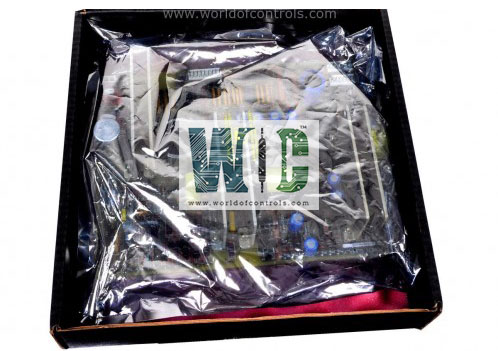
World Of Controls understands the criticality of your requirement and works towards reducing the lead time as much as possible.
IS200EXIBG1AAA - Exciter Bridge Interface Module is available in stock which ships the same day.
IS200EXIBG1AAA - Exciter Bridge Interface Module comes in UNUSED as well as REBUILT condition.
To avail our best deals for IS200EXIBG1AAA - Exciter Bridge Interface Module, contact us and we will get back to you within 24 hours.
SPECIFICATIONS:
Part Number: IS200EXIBG1AAA
Manufacturer: General Electric
Series: EX2100
Product Type: Exciter Bridge Interface Module
Power to Relay Coil: 125 V DC
Operating Voltage Range: 18�32 V DC
Operating temperature: -30 to +65�C
Size: 33.02 cm high x 10.16 cm
Connectors: Multi-pin connectors
Feedback Signals: Bridge voltage
Protection Features: Overcurrent
Communication Interfaces: EXTB, EGPA
Mounting Type: Rack or panel-mounted
Weight: 2.5 kg
Repair: 3-7 Days
Availability: In Stock
Country of Origin: United States
Manual: GEI-100475A
FUNCTIONAL DESCRIPTION:
IS200EXIBG1AAA is an Exciter Bridge Interface Module manufactured and designed by General Electric as part of the EX2100 Series used in GE Excitation Control Systems. It serves as the interface between the control electronics and the exciter power bridge. It manages the transmission of firing signals to the bridge and continuously monitors voltage, current, and bridge status to ensure reliable excitation control. The module also provides electrical isolation between high- and low-voltage circuits, protecting sensitive components and improving overall system stability. Built with robust fault detection and diagnostic capabilities, it ensures safe and precise generator operation under all load conditions.
INSTALLATION:
The module is designed for secure mounting within the Mark VI Excitation Control Cabinet. Connections are made via multi-pin connectors to interface with other excitation system boards. During installation, proper grounding and alignment must be ensured, and the environment should be free from excessive heat, dust, and moisture. Handling should follow standard ESD precautions to prevent damage to internal circuitry. After installation, initial configuration and testing should be performed through the control system to verify communication and operational readiness.
OPERATION:
The EXIB module transmits firing commands from the controller to the power bridge while receiving continuous feedback on current, voltage, and bridge health. It detects abnormal conditions such as overcurrent, voltage irregularities, or feedback loss, and reports these to the control processor for immediate corrective action. By maintaining accurate communication between the control electronics and the exciter bridge, the module ensures stable voltage regulation, smooth generator performance, and reliable system protection.
WOC offers the largest inventory of OEM replacement parts for GE Excitation Control Systems, along with expert repair and refurbishment services for faulty boards, restoring them to OEM specifications for reliable performance. We also provide unused and rebuilt components, all thoroughly tested and backed by a comprehensive warranty to ensure quality and durability. Our team of technical experts is available 24/7 to assist with part selection, troubleshooting, system support, and all automation needs. For pricing, availability, or service assistance, contact WOC by phone or email, and we will deliver prompt, reliable solutions to keep your systems operating efficiently.
What is the primary function of the Exciter Bridge Interface Module?
It serves as the interface between the exciter control electronics and the power bridge. The module transmits firing commands from the controller and monitors bridge voltage, current, and operational status. It ensures stable and safe generator excitation.
What types of signals does the module handle?
It handles control signals from the Mark VI processor to trigger the power bridge. The module also receives feedback signals, including bridge voltage, current, and fault indicators, which are used for real-time monitoring and fault detection.
What protection mechanisms are integrated?
The module includes overcurrent and overvoltage protection for the bridge circuit. It also monitors feedback for abnormal conditions, reporting faults to the control processor for immediate corrective action.